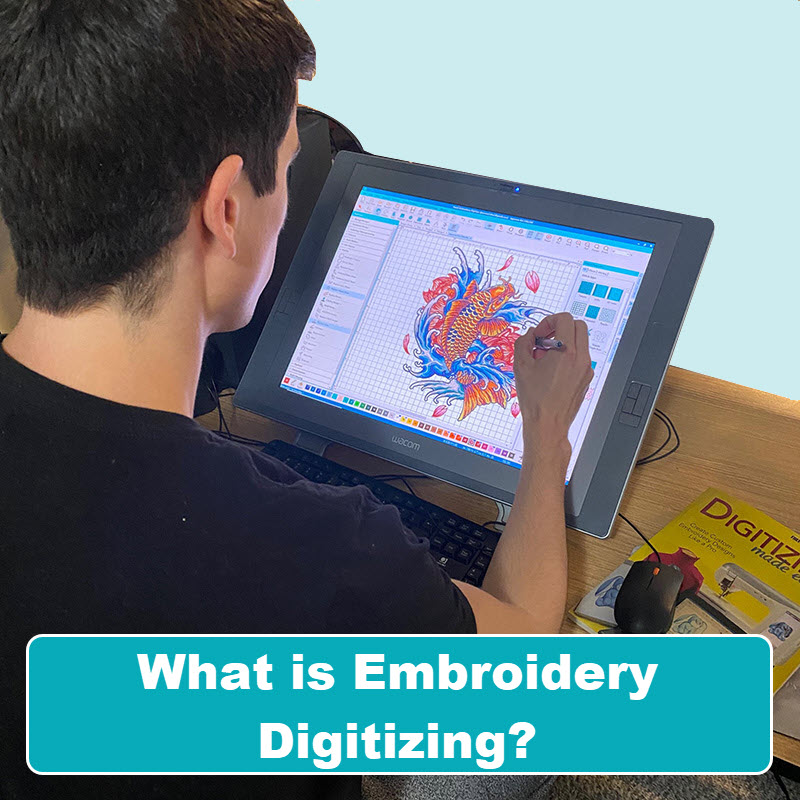Simplifying the Art of Embroidery Digitizing: Step-by-Step Overview
Embroidery digitizing is a precise craft that requires accuracy and imagination. As innovation remains to breakthrough, the digitization process has ended up being more easily accessible, enabling lovers to bring their elaborate styles to life easily. In this guide, we will decipher the intricacies of embroidery digitizing, breaking down each action carefully to streamline the process and empower both novices and experienced embroiderers alike. Stay tuned to find exactly how you can streamline this complex art kind and change your imaginative visions right into wonderfully stitched work of arts.
Recognizing Embroidery Digitizing Software
Needlework digitizing software program works as an essential tool for changing detailed layouts into electronic formats suitable with needlework devices, assisting in precise stitching and modification. This specific software permits users to import different photo documents formats, such as JPG or PNG, and convert them right into embroidery machine-readable formats like DST, EXP, or PES - Digitizing for Embroidery. By using attributes like stitch editing and enhancing, padding options, and string shade selection, digitizing software program allows customers to manage every facet of the design process
In addition, progressed embroidery digitizing software application offers devices for creating complex designs, readjusting stitch density, and integrating complex information. Users can additionally sneak peek the layout before stitching it out, making certain accuracy and reducing errors. Additionally, several software application supply automated attributes that aid streamline the digitizing process, conserving effort and time.
Understanding the capabilities of embroidery digitizing software is important for achieving high-quality results in embroidery tasks. By mastering this tool, embroidery enthusiasts and professionals can release their imagination and bring elaborate styles to life with accuracy and performance.

Picking the Right Style File
After familiarizing yourself with the capabilities of embroidery digitizing software, the next crucial step in the procedure is choosing the appropriate design apply for your task. Digitizing for Embroidery. When choosing a design declare needlework digitizing, it's essential to consider the intricacy of the style, the size of the end product, and the kind of textile you will be working with
For intricate styles with great information, a high-resolution image or vector data is recommended to make sure that the needlework machine can accurately replicate the style. Furthermore, the dimension of the final product plays a substantial duty in selecting the right style data. Larger styles might need greater resolution documents to maintain clarity and sharpness.
In addition, the sort of fabric you will be stitching on influences the selection of style file. Different materials may require adjustments in the layout documents to make certain that the stitches are effectively straightened and the style looks like planned. By thoroughly choosing the best design data based on these aspects, you can set yourself up for go to these guys a successful embroidery digitizing process.
Digitizing Tools and Methods
Making use of specialized software application and precision methods, digitizing devices are vital in transforming detailed layouts into embroidery-ready files. Needlework digitizing software, such as Wilcom, Hatch, or Embrilliance, gives the necessary system to convert art work right into stitch information. These programs use functions like stitch editing and enhancing, rug options, and lettering tools to make certain the style converts seamlessly onto material.
One of the vital techniques in digitizing is creating a clear path for the embroidery maker to follow. This entails digitizing each element of the style with accuracy, identifying stitch kinds, thickness, and directions. By utilizing tools like digitizing tablets or software-specific plugins, embroiderers can attain a high level of accuracy in their digitized designs.
Additionally, understanding the art of underlay stitching is important for generating quality embroidery. Underlay stitching supports the material and produces a foundation for the design, making certain that the final item is both visually enticing and lasting. By comprehending these digitizing devices and strategies, embroiderers can elevate their craft and bring intricate designs to life with accuracy and effectiveness.
Personalizing Stitch Kinds and Instructions
Having developed a foundation in digitizing tools and methods, a critical facet in progressing needlework craftsmanship hinges on customizing stitch kinds and directions with accuracy and function. The selection of stitch types can dramatically influence the total look and structure of the embroidered design. Satin stitches, recognized for their smooth and shiny finish, work well for developing boundaries and message. On the other hand, fill stitches are suitable for covering larger areas efficiently. By purposefully incorporating these stitch types, embroiderers can attain deepness and measurement in their designs.
In addition, the direction of stitches plays a her response crucial function in improving the visual appeal of the last embroidery. By trying out with different stitch angles and patterns, embroiderers can bring their layouts to life with impressive information and ins and out.
Screening and Refining Your Digitized Style
To make certain the accuracy and top quality of your digitized design, thorough screening and improvement are essential actions in the embroidery digitizing process. Once you have actually great site completed the digitization of your layout, it is essential to examine it before proceeding with the actual needlework. Checking permits you to determine any type of possible concerns such as thread breaks, sew thickness troubles, or design distortions that might influence the outcome.

After screening, it is very important to improve your digitized layout based on the responses from the test sew-out. This may entail tweaking stitch settings, adjusting thickness, or making changes to the general style to accomplish the wanted result. By iterating with testing and refinement, you can fine-tune your digitized design to excellence before moving on with the real needlework procedure.
Verdict
To conclude, understanding the art of embroidery digitizing requires an extensive understanding of the software program, selecting the right layout documents, using digitizing devices and methods, tailoring stitch types and directions, and screening and fine-tuning the digitized design. By complying with these steps, embroiderers can streamline the digitizing process and create high-quality stitched styles with precision and performance.
Comments on “Economical Digitizing for Embroidery: Accuracy and Detail”